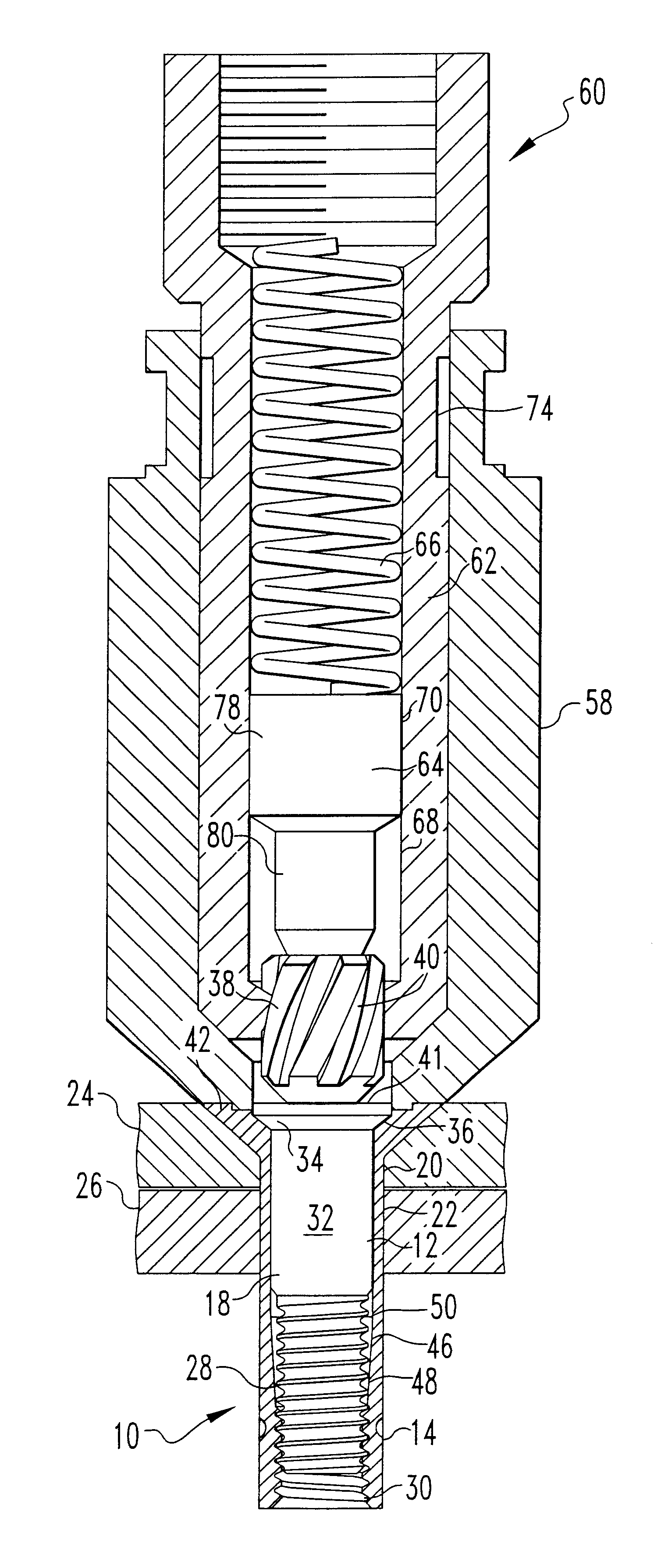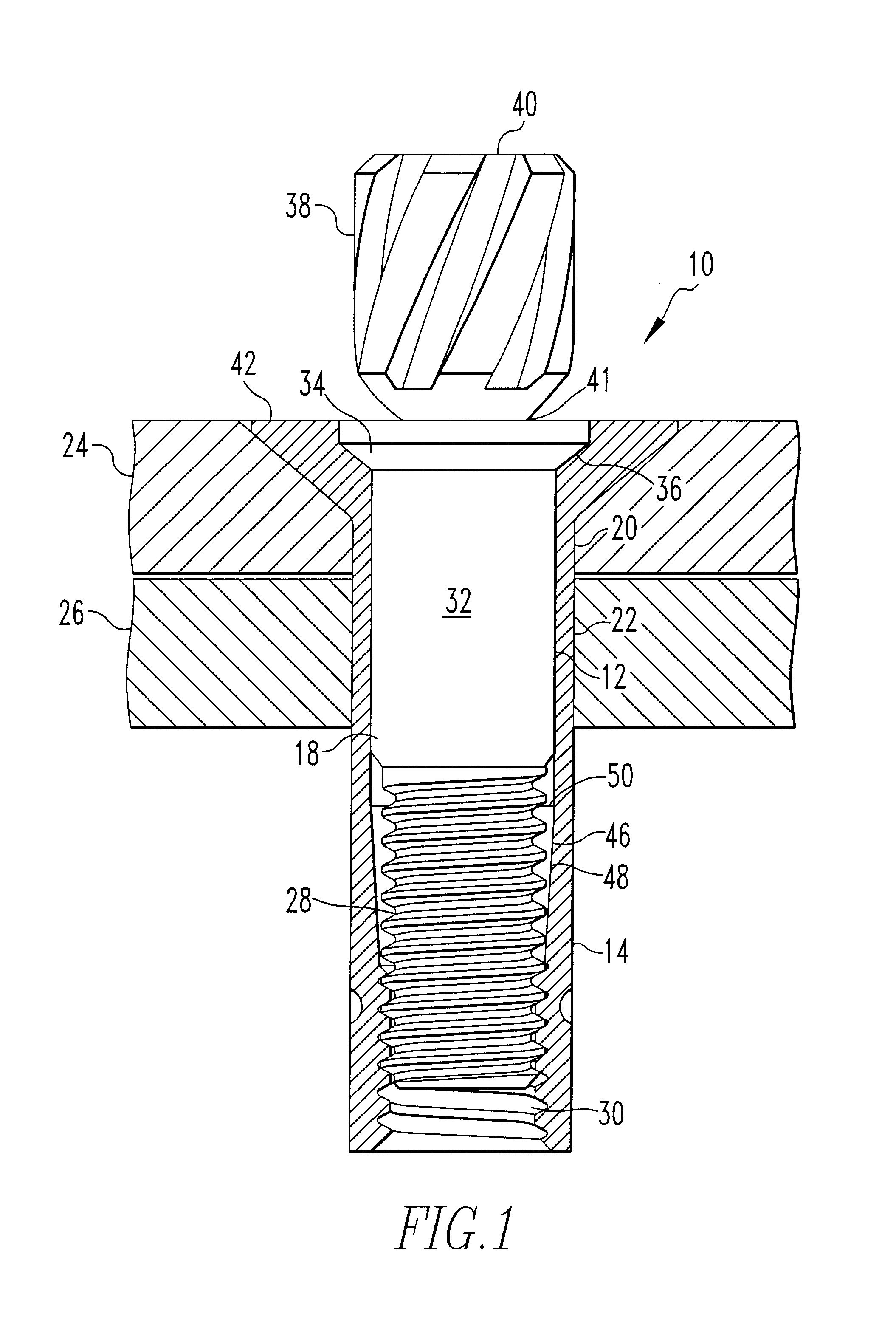Blind fastener and nose assembly for installation of the blind fastener
a technology of blind fasteners and nose assemblies, which is applied in the direction of threaded fasteners, load modified fasteners, screwed fasteners, etc., can solve the problems of wear damage to the nose nibs, the operation of the blind side bulb not being effective enough to clamp a plurality of workpieces together, and the bushing is wet, so as to reduce the wall thickness, facilitate the threading, and reduce the effect of wall thickness
- Summary
- Abstract
- Description
- Claims
- Application Information
AI Technical Summary
Benefits of technology
Problems solved by technology
Method used
Image
Examples
Embodiment Construction
Looking now to FIG. 1, a fastener 10 is shown to include a pin member 12 and a sleeve 14. In the fastener industry, pin member 12 may be referred to as a bolt, a screw, a spindle or a stem and sleeve 14 may be referred to as a bushing, nut or nut body. Pin member 12 has an elongated shank 18 which extends through aligned openings 20 and 22 in a pair of workpieces 24 and 26, respectively, to be secured together. A threaded portion 28 at one end of shank 18 is adapted to threadedly engage an internally threaded portion 30 of the sleeve 14 that is an integral component of the sleeve 14. The threaded portion 28 of the shank 18 has a diameter that is less than a smooth portion 32 of the shank 18 adjacent to the threaded portion 28. The pin member 12 is provided with a head 34 adjacent to the smooth portion 32 that is adapted to seat on an annular, outwardly facing, seat 36 at the outer end of the sleeve 14. In the particular construction illustrated, the head 34 is frustoconical and the ...
PUM
 Login to View More
Login to View More Abstract
Description
Claims
Application Information
 Login to View More
Login to View More - R&D
- Intellectual Property
- Life Sciences
- Materials
- Tech Scout
- Unparalleled Data Quality
- Higher Quality Content
- 60% Fewer Hallucinations
Browse by: Latest US Patents, China's latest patents, Technical Efficacy Thesaurus, Application Domain, Technology Topic, Popular Technical Reports.
© 2025 PatSnap. All rights reserved.Legal|Privacy policy|Modern Slavery Act Transparency Statement|Sitemap|About US| Contact US: help@patsnap.com



